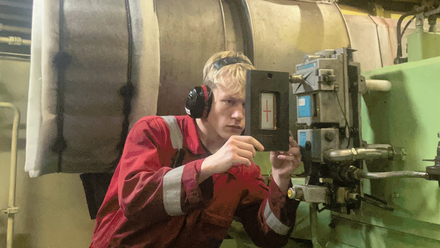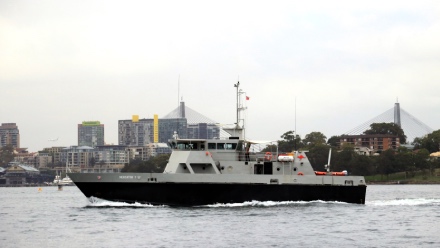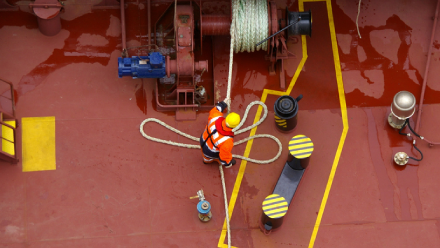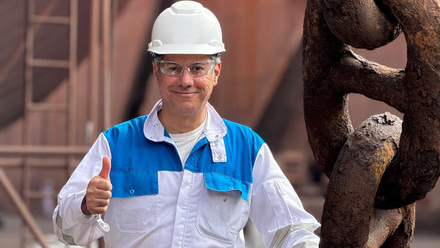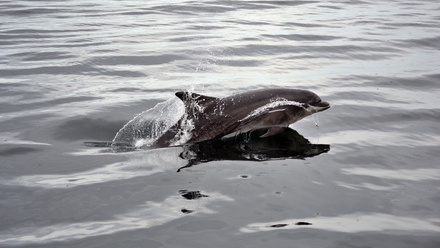Dedicated training ships aim to tackle seafarer shortage
The skills shortage in the maritime industry has been well documented. As well as a short supply of willing recruits, there are also capacity constraints on the training pathways that are essential to not only onboard people into the industry but to also progress their career at sea.
To address the seafarer shortage issue, the US Department of Transportation’s Maritime Administration (MARAD) has ordered five new purpose-built modern training vessels, known as National Security Multi-Mission Vessel (NSMVs), for the country’s state maritime academies. The first of these, Empire State, has now been delivered from Philly Shipyard, part of the Aker group, and is serving at SUNY Maritime College.
Steinar Nerbovik, President & CEO of Philly Shipyard, said the Empire State will provide: “A safe, reliable and state-of-the-art training platform for generations of future mariners.”
The next training vessel, NSMV II, destined for the Massachusetts Maritime Academy, is scheduled to be delivered later this year. Work is already underway on the next three, bound for the Maine, Texas and California Maritime Academies, with delivery of all due by 2026.
Each NSMV features numerous instructional spaces, a full training bridge, and accommodation for up to 600 cadets to train in a maritime academic environment at sea.
This next-generation training fleet will not only address a critical shortage of qualified officers necessary to crew government and commercially owned sealift ships, but will also support humanitarian assistance and disaster relief missions. Each ship will feature modern hospital facilities, a helicopter pad, and the ability to accommodate up to 1,000 people in times of humanitarian need along with roll-on/roll-off and container storage capacity.
Built for a wider purpose?
Could such an initiative be useful elsewhere? After all, the shortage of seafarers is a global problem, with the Seafarer Workforce Report from the Baltic and International Maritime Council (BIMCO) and the International Chamber of Shipping (ICS) forecasting that the industry will face a severe shortage of officers by 2026 if training and recruitment levels are not significantly increased on a global scale.
The problem is compounded by the rise of digital connectivity and automation on modern ships and the shift to alternative fuels with new handling specifications, which are going to require an upskilling of crews to ensure safety and security at sea.
Bob Beadell, President and Principal Consultant at British Colombia-based Invicta Marine, claimed a similar initiative would be very helpful in Canada, where he believes a lack of national policy and leadership means a fragmented industry is failing to effectively address the problem.
“The government here is addressing the shortages through immigration and while that may be a good short-term solution, the problem will continue to exist for the longer term,” he said, adding that skills shortages are accelerating due to the retirement of senior officers and the lack of competitive salaries. “Although salaries are not terrible, they don’t reflect the need to be away from home for extended periods when compared to building trades, for example.”
As a result, Beadell said it was difficult to convince younger people to consider a career at sea, which doesn’t appeal compared to shoreside employment.
Maria Dixon, CEO of Panama specialist ISM Shipping Solutions, agreed that younger generations no longer think about going to sea as a viable career. “The reputation of the profession, constant referrals to crew-free autonomous ships and now attacks on ships help create a package of doubts and no real incentives for them to go to sea,” she said. “We need to pave the path to attract and retain crews, and that means creating an attractive offer to sign on including good connectivity, good salary, good environment and good shore leave.”
Having been onboard training ships and knowing cadets that have served on them, Dixon thinks MARAD’s newbuild fleet of NSMVs is a good idea.
“This initiative is perfect,” she said. “A new cadet on a new ship may feel isolated, lonely, threatened or even scared, especially young women. A training ship is the best way to throw them at the deep end but with a life saver of being with their ‘mates’, providing a zone of comfort, so they can get their future career off to a good start.”
She added a caution to the industry, and society at large: “If we do not look after the needs and expectations of cadets, we will regrettably lose that manpower for ever. And no cadets mean no seafarers means no shipping means no shopping!”
Main image: Empire State at sea; credit: MARAD

